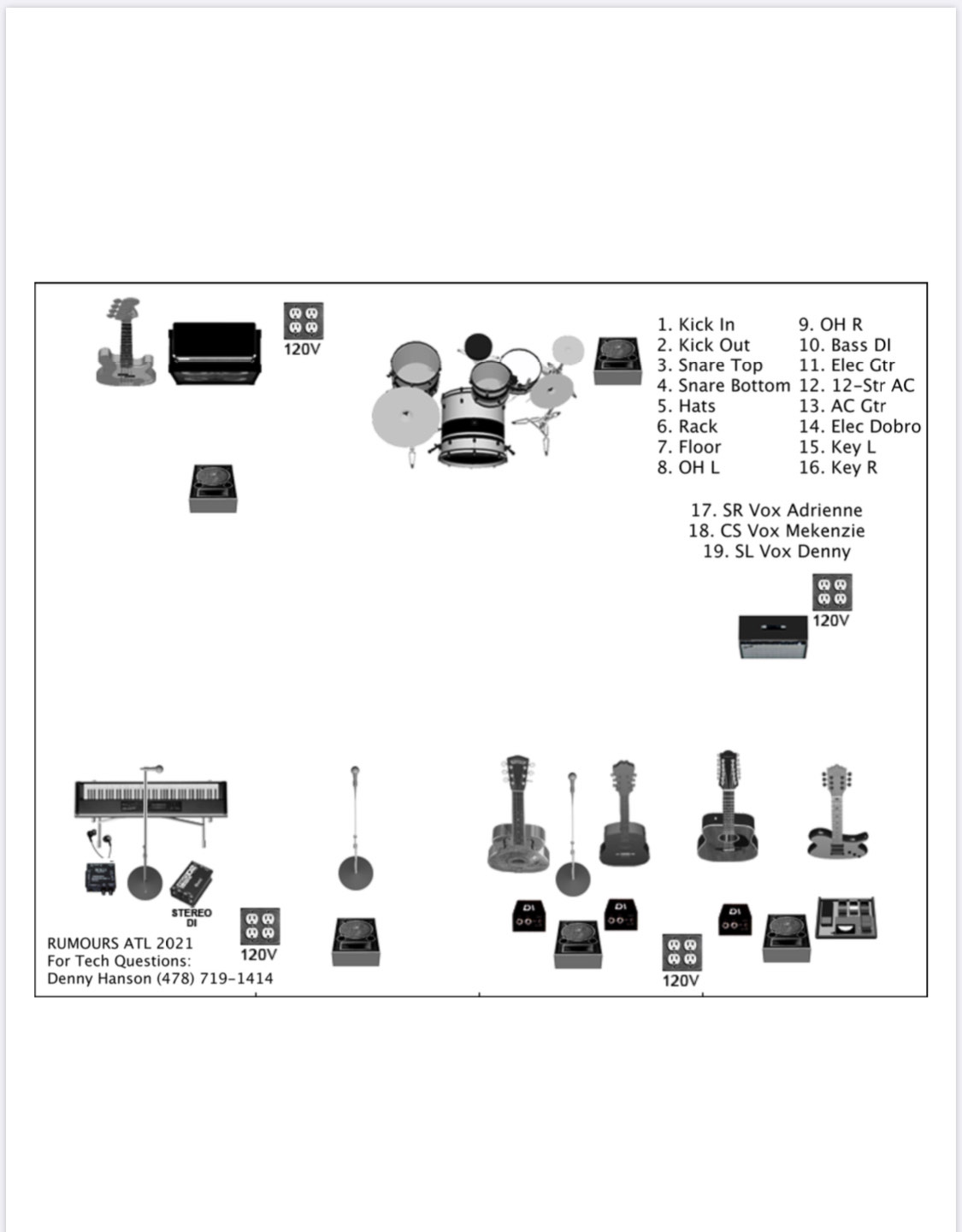
For each entry, include the type of monitor needed, who it’s for, its position on stage and its corresponding send on the console.

A thorough input list should also include which mic stand to use for each mic.Īfter creating the input list, create a monitor list detailing any stage monitors or in-ear monitors required. The main purpose of an input list is to keep track of all the microphones, line inputs and other sources necessary to capture a performance, as well as which console channels they’ll be assigned to. Once you’ve gathered all the information above, you can start laying out the foundational document that will dictate much of the setup from here on: the input list. Do your homework by researching the act, watching performance videos or reaching out to colleagues.Identify any equipment that could present complications, such as digital controllers or vintage organs.Figure out who will be providing any backline equipment, such as amplifiers and drum kits.Assess the talent’s experience, expectations and technical knowledge to communicate effectively.Reach out to managers, technicians and other personnel for additional information.Review any stage plots, riders or other documentation sent by the talent.Review any stage plots to determine what equipment you will need and what can be removed from the stage. The checklist below outlines key steps you can take right away to ensure that everything goes smoothly. Any work you can do beforehand will pay off when the pressure is on, and it all starts in the days leading up to the show.Īlthough it’s usually not possible to do much physical setup before the day of the show, any advance planning you can do now will make your job easier later on. Once the performers show up for soundcheck, the pace and the stakes increase dramatically, so preparation is key to a successful show. The period before the talent arrives at the venue is your chance to get everything set up and prepared at your own pace. Ensuring that the stereo image matches the stage layout is critical to creating a cohesive show.Įvery production consists of two distinct time frames. When the sound coming from the PA doesn’t match what the audience sees, this cognitive dissonance can detract from the experience. When everything fits neatly into the frequency spectrum and time domain without interfering with the other elements, your mix will sound richer and clearer. In an effective mix, every instrument, vocal and sound must have its own space. You can always improve the sound, but you need to start somewhere. At the most basic level, this means making sure every input is receiving a clear signal with no hum, noise or feedback. Before anything can sound amazing, everything has to sound good. The three pillars outlined below represent the fundamental elements of a good mix, and will inform every decision from here on.

When working with unfamiliar acts multiple times a week, it’s not usually possible to develop a specific approach for each performance-especially with limited time to prepare. Assuming several known factors, such as the venue itself and a house PA system, these strategies provide a framework for approaching unfamiliar situations with confidence and achieving great sound-every time. This blog will provide strategies for successfully navigating any kind of production, from the earliest stages of planning and paperwork all the way to soundcheck and showtime. From solo performers and jazz trios to larger chamber ensembles and theater troupes, the wide variety of possible formats and genres demands a flexible and efficient workflow to make each show a success with minimal prep time. Where that’s the case, we have provided a link for those who prefer to buy the print version.Īll scripts are copyright the playwright, and performance rights must be secured before the play is produced.įinding the perfect play to produce has never been easier.Staff sound engineers at venues often have to accommodate wildly different types of acts each night, each with their own technical requirements and logistical challenges. In many instances, however, our scripts are also available in print. ProPlay has been created to make the scripts of professionally-produced stage plays available to a wider readership, and to a wider pool of potential producers, than conventional play publishing allows.

In most cases, the playwright has chosen to have the entire script posted in all cases, substantial portions of the play may be read now. For free. You may browse our play scripts by category or by playwright name. ProPlay is the premier site on the web for online, professionally-produced stage plays, which you can read right now, free-of-charge. Professionally produced stage plays, ready to read now Browse our latest releases! Featured in Comedies: Oh! Christmas Tree


 0 kommentar(er)
0 kommentar(er)
